Aeration a critical consideration for effective management, successful production
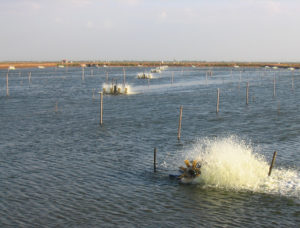 The stratification of a pond limits the supply and availability of oxygen to the upper strata of the water column. At night, this limited oxygen reserve is quickly consumed by the respiration of plankton, fish and/or shrimp, a variety of microorganisms, and the oxidation of reduced compounds in the water and pond bottom soil. To avoid oxygen deficits, fish farmers often provide ponds with nighttime aeration. In shrimp ponds, farmers also turn on the aerators for some hours during the day to increase oxygen levels and overall quality of bottom water and pond soil, as shrimp exploit natural food organisms and feed on sinking pellets in this zone.
The stratification of a pond limits the supply and availability of oxygen to the upper strata of the water column. At night, this limited oxygen reserve is quickly consumed by the respiration of plankton, fish and/or shrimp, a variety of microorganisms, and the oxidation of reduced compounds in the water and pond bottom soil. To avoid oxygen deficits, fish farmers often provide ponds with nighttime aeration. In shrimp ponds, farmers also turn on the aerators for some hours during the day to increase oxygen levels and overall quality of bottom water and pond soil, as shrimp exploit natural food organisms and feed on sinking pellets in this zone.
[Editor’s Note: This is Part 2 of a two-part series. For Part 1, please click here.]
Water circulation is an effective strategy to mix high-oxygen surface waters with low-oxygen (anaerobic) bottom waters (Figure 4). On sunny days, surface waters are invariably supersaturated with oxygen from microalgae photosynthesis. Photosynthesis, therefore, is the fastest, most efficient and inexpensive way to incorporate oxygen into pond water. In aquaculture ponds, on photosynthetic peak hours (from about 11 am to 3 pm), surface oxygen concentration increases over 2 mg O2/L/hr. (or 2 g O2/m3/hr.). Photosynthesis is capable of supersaturating pond surface waters with oxygen much more efficiently than the most efficient ceramic microbubble diffusing plate used to oxygenate hauling fish tanks.
If we consider a 1-ha pond (10,000 m2), and a surface water layer of 0.6 m, the incorporation of 2 g of oxygen/m3/hr. through photosynthesis equals to 12 kg of oxygen/hr. added to pond water. In comparison, paddlewheel aerators and vertical pumps effectively incorporate about 1 kg O2/hp/hr. Therefore, to incorporate the same amount of oxygen added by photosynthesis, theoretically, it would be necessary to apply 12 hp/hr. of mechanical aeration. In fact, much more aeration power is needed, since mechanical aerators can only incorporate oxygen to water up to the DO saturation point (about 7.8 mg O2/ L at 28°C at sea level in freshwater, and 6.4 in sea water at a salinity of 36 ppt). And the oxygen incorporation through mechanical aeration occurs at a very high use of and cost of energy, as the closer to the saturation the DO gets, the less efficient is the transfer of atmospheric oxygen into water through mechanical aeration.
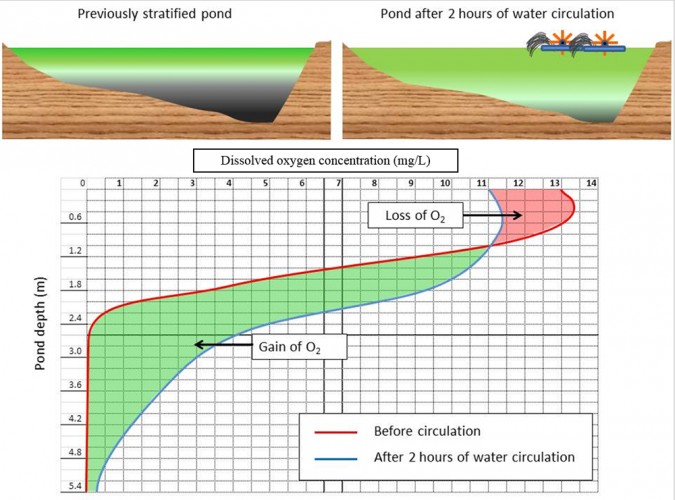
Szyper and Lin (1990), in a study on water circulation in 1.4 to 1.6 m deep tilapia ponds with the same stocking and feeding management, observed that ponds receiving two hours of water circulation during the photosynthesis peak hours (noon to 1 pm and 3 to 4 pm) had early morning (6 am) oxygen levels of about 3 mg/L compared to less than 0.5mg/L in ponds without circulation. Therefore, water circulation is an effective mean to increase the overall oxygen reserves for nighttime respiration of pond communities, until photosynthetic activity can restore the oxygen levels the next day. In this way, the amount of supplemental nighttime aeration applied to ponds can be significantly reduced.
How to affect water circulation?
Surface water can be pushed down (using paddlewheel, propeller-aspirator pumps or especially designed water circulators, among other devices) or bottom water can be lifted up (using air lift devices, vertical “fountains” type of aerators, or other means) to promote water circulation (Fig. 5). In order to be more effective disrupting water column stratification, incorporating oxygen into bottom waters and increasing overall oxygen reserves in a pond, water circulation should be carried out during photosynthesis peak hours, when surface water is supersaturated with oxygen.
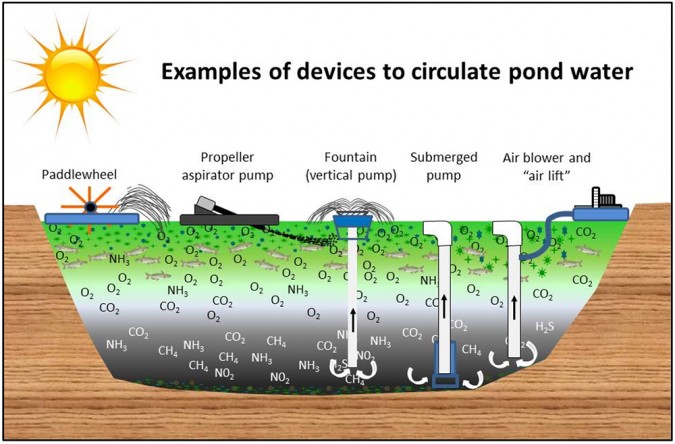
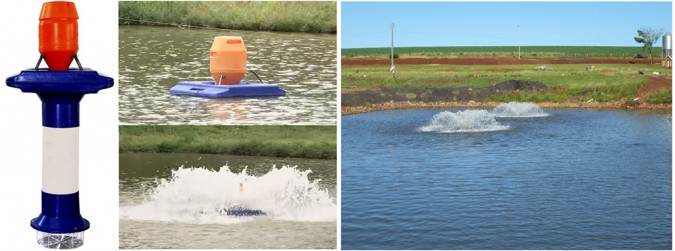
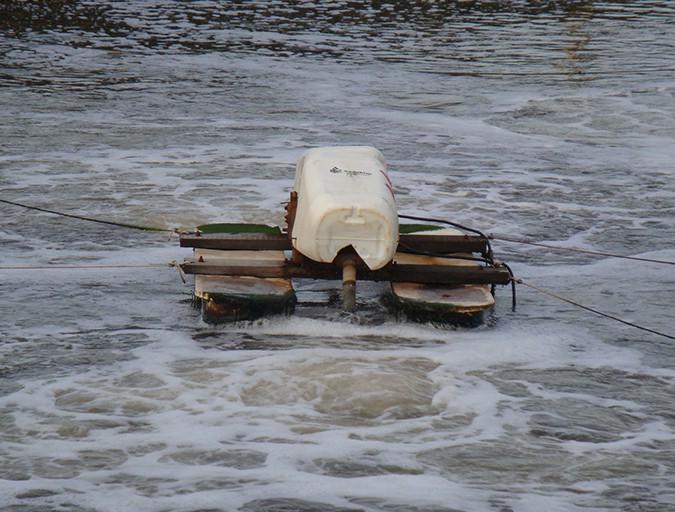
Benefits of water circulation

As discussed earlier, regular water circulation disrupts chemical and physical pond water stratification, makes the pond environment more homogeneous and stable, and lessens the risk of fish kills due to a sudden pond turnover. Water circulation increases oxygen storage in a pond, reducing the hours and costs of nighttime supplemental aeration. The productivity of microalgae (phytoplankton) and, thus, availability of natural food (microalgae, zooplankton and benthic organisms) is increased with water circulation. Microalgae are kept in constant movement and are supplied with nutrients recycled from organic wastes decomposed on the pond bottom. Water circulation also seems to favor beneficial microalgae, such as green algae, reducing the dominance of undesirable cyanobacteria (blue green algae) often associated with off-flavor issues in the cultured animals and with some episodes of toxicity to fish. Green algae have also been shown beneficial to reduce Vibrio infections in shrimp. As the quality of bottom water and pond soils improves through circulation, benthic organism become more available to fish and shrimp. In a well-mixed pond, fish and shrimp can better exploit all pond dimensions and have more options of natural food. As natural food serves as a source of nutrients and health-promoting factors, and pond water quality is improved, farmers will experience better growth, feed conversion ratio and survival of their cultured fish and shrimp.
Final remarks
In general, aquaculturists implicitly understand that water circulation is good for fish and shrimp. However, not all of them use water circulation as a regular management practice. My personal belief and significant field experience is that through water circulation farmers can significantly improve the quality of a pond environment, thus the production performance (growth and feed conversion), health, survival, feeding rates and, consequently, the harvest yield of cultured fish and shrimp. And I hope more farmers experiment water circulation, applying the fundamentals presented in this article. Though it is important to stress that most of the observations on water circulation are rather empirical yet, and few controlled studies have truly assessed such benefits.
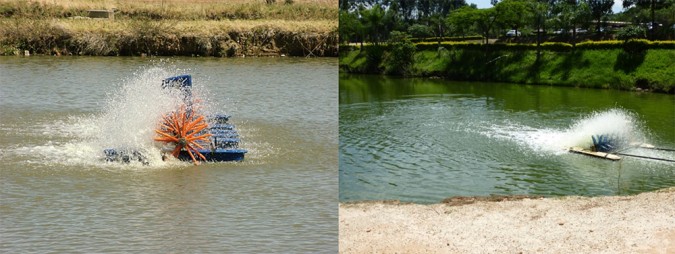
More comprehensive investigations on water circulation should address: a) the most efficient devices for water circulation in ponds; b) water circulation protocols and management; c) how much increase in daily feeding rate (and, thus, pond production yield) can be achieved by applying routine water circulation; d) how many hours and money spent on supplemental aeration can be spared by applying regular water circulation in ponds.
Now that you've reached the end of the article ...
… please consider supporting GSA’s mission to advance responsible seafood practices through education, advocacy and third-party assurances. The Advocate aims to document the evolution of responsible seafood practices and share the expansive knowledge of our vast network of contributors.
By becoming a Global Seafood Alliance member, you’re ensuring that all of the pre-competitive work we do through member benefits, resources and events can continue. Individual membership costs just $50 a year.
Not a GSA member? Join us.
Author
-
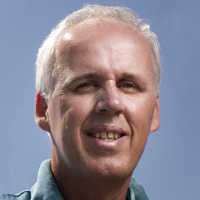
Fernando Kubitza, Ph.D.
Acqua Imagem Services in Aquaculture
Rua Evangelina Soares de Camargo, 115
Jardim Estádio – Jundiai/SP – CEP 13203-560 Brazil[114,98,46,109,111,99,46,109,101,103,97,109,105,97,117,113,99,97,64,111,100,110,97,110,114,101,102]
Tagged With
Related Posts
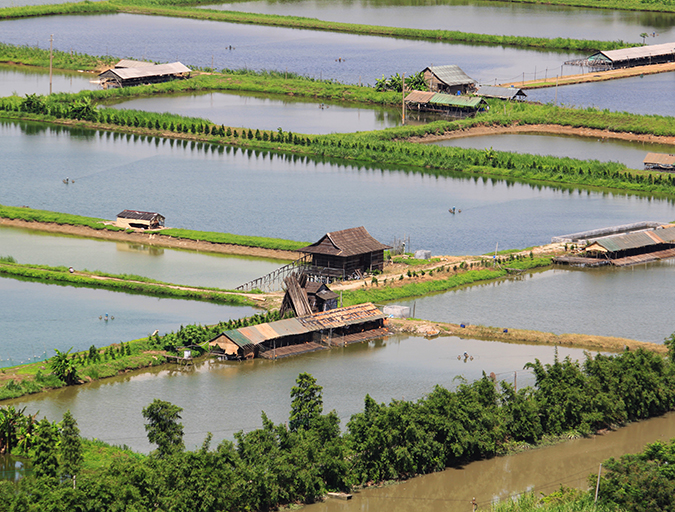
Responsibility
Aquaculture certification steers to zone management
Zone management is an emerging field of interest among industry stakeholders. Experts say it will aid in controlling diseases and in determining carrying capacities. We take a closer look at the management tool’s potential.
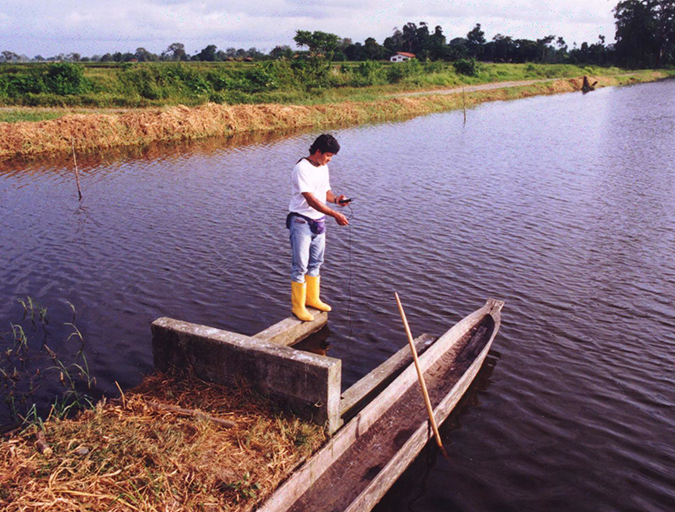
Responsibility
The importance of water analysis in aquaculture
Proper monitoring of water quality in aquaculture production systems is critical to enable appropriate and timely management decisions. It requires reliable equipment, trained technicians that follow instructions and apply quality control measures, proper reagents and calibrated equipment, and appropriately collected water samples that are promptly analyzed.
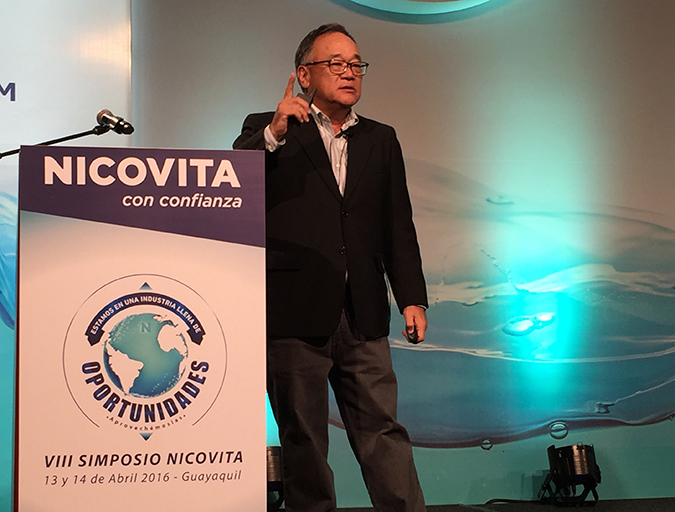
Responsibility
CP aquaculture expert stresses proper pond management, design
Shrimp farmers can look to the chicken-farming industry for guidance on proper pond management. At the Nicovita Symposium in Ecuador, Dr. Dean Akiyama of Charoen Pokphand encouraged shrimp producers to overcome challenges at hatchery level.
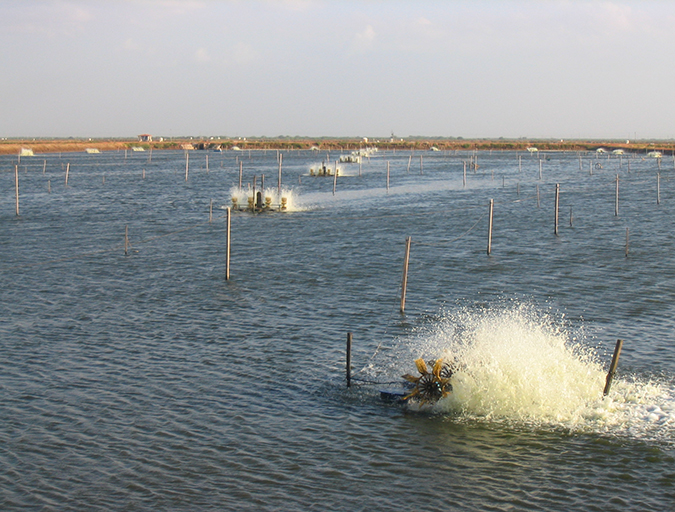
Health & Welfare
Proper water circulation in aquaculture ponds critical
Promoting water circulation during the day time is an effective strategy to enrich pond water with oxygen produced by photosynthesis, and can significantly reduce the costs of night time supplemental aeration.

